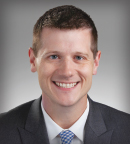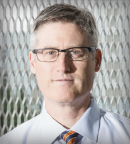It is widely acknowledged that patients with cancer living in rural areas of the United States face limited access to medical and oncology providers, often have to travel long distances to receive care, and experience obstacles in clinical trial participation—all of which affect quality of care and health outcomes. As a result, rural counties also have high rates of cancer-related mortality and other negative treatment outcomes,1 and this is true for adolescent and young adults (AYAs) with cancer as well. One study focused on the geographic factors and outcomes in AYAs with cancer; the investigators found that rural residence and living long distances from a reporting hospital were associated with later-stage diagnoses and lower survival in this patient population.2
Among the most daunting challenges facing patients in these communities is the lack of primary and specialty care physicians, as well as fewer home- and community-based service providers compared with those living in urban areas. For example, although an estimated 17% to 20% of the population resides in rural areas, just 3% of medical oncologists practice in rural communities, and more than 70% of counties in the United States have no medical oncologists at all.3

“It is usually easier for adults to seek and receive care closer to home than it is for AYA patients with cancer, but we are focused on doing everything we can to change that situation.”— Kirk D. Wyatt, MD
Tweet this quote
“Provider shortages are a major issue across the country, especially in rural America, where it is hard to recruit physicians, so it’s even more important for us to do what we can to provide high-quality subspecialty cancer care. Patients need this care, and it’s difficult for them to get it immediately close to their home,” said Kirk D. Wyatt, MD, a pediatric hematologist-oncologist at Sanford Health, Fargo, North Dakota, which has just five practicing pediatric oncologists in the entire state. “Despite having so few oncologists, we do everything we can to get patients care as close to their home as we can.”
In an interview with The ASCO Post, Dr. Wyatt discussed how physicians practicing in rural regions of the country are overcoming challenges to providing care for AYAs with cancer and the growing use of telemedicine technology to reduce travel time and improve access to care for these patients.
Accessing Care
You specialize in pediatric hematology-oncology and also treat adolescents and young adults with cancer. How accessible is cancer treatment for AYAs living in North Dakota?
There are two aspects I see to care accessibility. There is accessibility for getting the initial diagnosis and accessibility for treatment after patients have been diagnosed with cancer. Two-thirds of the patients we see at Sanford Health live in rural communities, and many of the community hospitals outside of Fargo and Bismarck have cancer centers, but they are typically focused on adults. It is usually easier for adults to seek and receive care closer to home than it is for AYA patients with cancer, but we are focused on doing everything we can to change that situation.
Many young adults are likely to have better outcomes when they are treated on pediatric cancer treatment regimens, and it is challenging to make sure that AYA patients are referred to practices where those treatments can be accessed or where clinical trials are available. For example, if a primary care physician suspects that a young adult may have cancer, the physician may not know where the best place is to refer that patient—either to a pediatric oncologist or an adult oncologist.
I am one of five practicing pediatric oncologists in North Dakota. We all know each other and work collaboratively to ensure patients get the care they need as close to home as possible, including in surrounding states. Sanford Health has an outreach clinic in Bemidji, Minnesota, and one day a month, we travel there to offer patients office-based care. We do not provide infusions there, but we are able to see patients who are on oral chemotherapies and those who have completed treatment and need follow-up care. Normally, these patients would have to travel 2.5 hours each way to see us, but for many, it is a 10-minute drive to our outreach clinic.
Overcoming Traveling Distances for Care
What other challenges do AYAs with cancer face living in rural communities?
The big elephant in the room is the distance patients have to travel to receive care. It is not uncommon for me to have a patient who has to drive 5 hours each way once a week for treatment. You can imagine how challenging that would be for anyone, but if you are in your early 20s, single, and living independently, it is very difficult to maintain a job and pay for rent and other living expenses while undergoing cancer treatment. So, that is a major challenge.
We typically partner with patients’ local hospital emergency departments and other health-care facilities to ensure young adults can receive emergency care for issues such as fever. However, it can be challenging for patients to receive care at facilities where they are not familiar with the staff and the staff do not routinely care for young adults with cancer.
Using Telemedicine for AYA Care
Are you able to use telehealth technology to help alleviate some of the in-office visits and relieve patients from having to travel far distances to receive care?
Yes. The use of telemedicine has definitely grown since the COVID-19 pandemic. Many institutions here did not have robust telemedicine programs before the pandemic, but both providers and patients have become more familiar and comfortable with the technology since then. Sanford Health recently announced a $350 million virtual care initiative to ensure our patients have access to high-quality care no matter their ZIP code. There has also been a reduction in the legislative hurdles and changes in reimbursement fees that have led to greater use of telehealth for cancer care.
That said, many aspects of cancer care still need to be done in person, especially if the patient needs an imaging scan or a physical exam to identify whether the cancer is still in remission. For those reasons, most of the care we provide is still done face-to-face.
Providing Support Services
Does your institution have support programs for AYAs, including high-quality survivorship care, financial counseling, psychological support, sexual health, and fertility care? Are there clinical trial opportunities for AYAs with a poor prognosis?
We are continuing to grow our support services. My colleague, Melanie Chihak, DO, has developed a childhood and AYA survivorship clinic at Sanford Health, and we rely heavily on our social workers to identify resources for patients and their families. We also offer reproductive health services as well and refer patients to other cancer centers, including Mayo Clinic, if patients need services we do not currently offer, such as ovarian tissue cryopreservation.
We offer clinical trials participation for many cancers that affect AYAs. We are learning more about risk stratification in pediatric and in AYA oncology to identify subsets of disease that have poor prognosis, and many of the trials we have are focused on those patients.
Improving AYA Survival Outcomes
How does increasing access to care improve survival outcomes for the most vulnerable AYAs with cancer?
As I mentioned previously, there are two aspects to care access. First, we need to make sure patients get in the door at a center that can give them a diagnosis and start treatment. Second, once a patient has established care, how do we make sure they have everything they need to continue receiving that care?
I think the former, initially getting diagnosed and treated, is the more important one. Once patients walk in our door, we are able to connect them with resources to make sure they are able to get the care they need.
Guest Editor

Brandon Hayes-Lattin, MD, FACP
Dr. Hayes-Lattin is Professor of Medicine and Deputy Division Head of the Adolescent and Young Adult Oncology Program at the Knight Cancer Institute at Oregon Health and Science University, Portland.
It is often the case that pediatric and young adult cancers are not diagnosed immediately, because cancer is not top of mind for these patients, and symptoms can be missed by young patients and primary care physicians. Also, young adults typically do not present for medical care as frequently as older adults, because they feel healthy and may not have annual checkups. So, that aspect of access to care is the most challenging, because typically the earlier the cancer is diagnosed, the better the prognosis.
Making sure that adolescents and young adults are able to get medical attention once they experience the first signs of cancer, and then diagnosed and started on treatment, is critical for a successful outcome. That is our goal for every AYA patient with cancer.
DISCLOSURE: Dr. Wyatt reported no conflicts of interest.
REFERENCES
1. Levit LA, Byatt L, Lyss AP, et al: Closing the rural cancer care gap: Three institutional approaches. JCO Oncol Pract 16:422-430, 2020.
2. Johnson KJ, Wang X, Barnes JM, et al: Associations between geographic residence and US adolescent and young adult cancer stage and survival. Cancer 127:3640-3650, 2021.
3. National Cancer Institute: GIS Portal for Cancer Research. Cancer Map Stories: Rural-Urban Disparities in Cancer. Available at https://gis.cancer.gov/mapstory/rural-urban/index.html. Accessed September 29, 2023.

